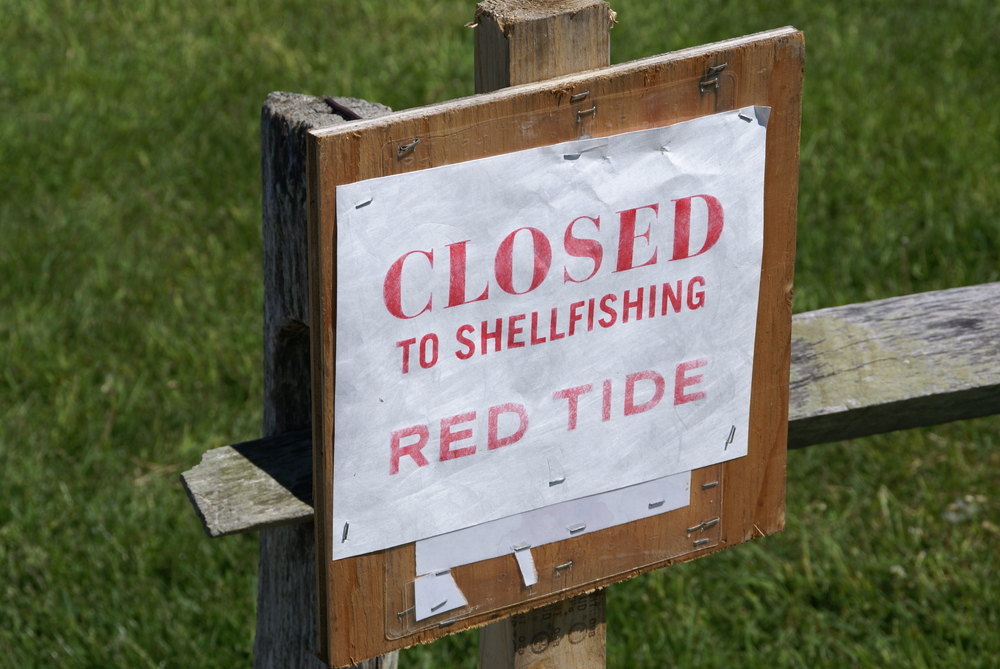Breaking
Red tide off northwest Florida could hit economy
CLEARWATER, Florida — It’s like Florida’s version of The Blob. Slow moving glops of toxic algae in the northeast Gulf of Mexico are killing sea turtles, sharks and fish, and threatening the waters and beaches that fuel the region’s economy.
Known as “red tide,” this particular strain called Karenia brevis is present nearly every year off Florida, but large blooms can be particularly devastating. Right now, the algae is collecting in an area about 60 miles wide and 100 miles long, about 5 to 15 miles off St. Petersburg in the south and stretching north to Florida’s Big Bend, where the peninsula ends and the Panhandle begins.
Fishermen who make a living off the state’s northwest coast are reporting fish kills and reddish water.
“It boils up in the propeller wash like boiled red Georgia clay. It’s spooky,” said Clearwater fisherman Brad Gorst as he steered the charter fishing boat Gulfstream 2 in waters near Honeymoon Island, where dead fish recently washed ashore.
Red tide kills fish, manatees and other marine life by releasing a toxin that paralyzes their central nervous system. The algae also foul beaches and can be harmful to people who inhale the algae’s toxins when winds blow onshore or by crashing waves, particularly those with asthma and other respiratory ailments.
In 2005, a strong red tide killed reefs, made beaches stinky and caused millions in economic damage. A weaker red tide in 2013 killed 276 manatees, state records show, after infecting the grasses eaten by the endangered creatures.
“This red tide … will likely cause considerable damage to our local fisheries and our tourist economy over the next few months,” said Heyward Mathews, an emeritus professor of oceanography at St. Petersburg College who has studied the issue for decades.
Despite years of study, there’s nothing anyone has been able to do about it. In the 1950s, wildlife officials tried killing the red tide algae by dumping copper sulfate on it, which made the problem worse in some ways. But some researchers are working to change that.
Predicting when red tides are going to be especially bad can help fishermen and beach businesses prepare.
Right now, much of the information comes from satellite images, which are often obscured by clouds.
“In this particular red tide, we got a good image on July 23 – then we went weeks without another image,” said University of South Florida ocean scientist Robert Weisberg.
Weisberg is one among a team of researchers developing a prediction model based on ocean currents data, rather than satellite images.
The prediction model tracks the currents that bring natural nutrients like phytoplankton the red tide needs to gain a foothold. Unlike other red tide species, Karenia brevis is not believed to be caused by man-made pollution such as agricultural runoff, and historical accounts of what is believed to be the same red tide date back to the 1700s.
Using his method, Weisberg in March predicted the current late summer bloom that is now causing so much worry. It allowed state officials to issue a warning July 25.
While the project recently received “rapid response” money from the National Oceanic and Atmospheric Administration to send a data-collecting robotic glider into the bloom, future funding for this work is in doubt.
Weisberg said the team is still trying to develop a model that can look further into the future.
But the tides often start far offshore, where gathering data and images can be a time-consuming, expensive undertaking. The Florida Fish and Wildlife Commission has tried to stem this data gap by giving fishermen sampling jars to take out to sea with them.
While a good stopgap, Republican U.S. Rep. David Jolly, who represents St. Petersburg, has called for more NOAA funding to help prepare for future events.
“Using fishermen to collect samples clearly shows we have a research gap,” Jolly said. “The more we learn about it, the more we can prevent a spread and protect our shoreline.”
NOAA spokesman Ben Sherman said the president’s 2015 budget does ask for a $6 million increase for research related to red tide forecasting, including the Gulf of Mexico, but Congress still has to approve it.
Fishermen say a better warning system could help save time and money.
“If we had more of a head’s up we could plan out where we would go fish,” said Mike Colby, captain of the Double Hook fishing vessel in Clearwater.






















